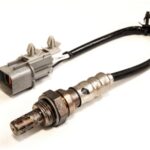Slide 1. Introduction.
The class develops what the check engine light is, the faults it warns of in the vehicle, and the implications for fleet management.
Slide 2. Check engine light.
- What exactly is the check engine light?.
One of the most uncertain moments for many drivers is when the check engine light comes on the instrument panel. The problem is not only that it comes on, but also the uncertainty of whether the vehicle is about to fail completely or whether it is just a simple warning.
The important thing is not to ignore it. This warning light is connected to the vehicle's diagnostic system and serves to alert you that there is a problem with the engine. Addressing it in time can save you very expensive repairs.
- A warning from the on-board diagnostic system (OBD).
The check engine light is a small icon in the shape of an engine that appears on the dashboard. It comes on when the OBD system detects an anomaly. It is normal for it to light up when you start the engine and then go out. However, if it stays on or flashes, it means that something is not working properly.
Even though the vehicle may continue to run normally, the check engine light indicates that some parameter is outside the permitted values, whether due to emissions, air-fuel mixture, sensors, or electrical faults.
- There are three ways in which the light can behave, as follows.
1. It flashes.
This indicates that the fault detected requires immediate attention, as otherwise the problem may worsen and cost more time and money to repair. The associated fault is usually an engine malfunction.
2. It stays on.
The problem does not require immediate attention. If ignored, the problem may eventually become more serious.
The vehicle can continue to run, albeit with reduced performance or abnormal fuel consumption.
The cause could be the EGR valve. This is a system that reduces nitrogen oxide NOx emissions and optimizes exhaust gas management.
In these cases, you should take your car to a mechanic to have the EGR valve checked. Depending on the type of fault, it may need to be cleaned with specific products or replaced with a new one to ensure efficient exhaust gas recovery.
3. It turns on and off.
If this happens, it is because the OBD has performed a new fault detection test after the light first came on and has not found any errors, so it turns off.
- Can I continue driving with the warning light on?.
1. If the light is steady and the vehicle is running normally.
You can continue driving with caution, but have the vehicle checked as soon as possible.
Driving with the warning light on can.
Ø Increase fuel consumption.
Ø Increase pollutant emissions.
Ø Cause more serious damage to the engine or catalytic converter.
1. If the light flashes.
If you notice a loss of power, the engine not responding correctly, jerking, strange noises, a burning smell, or if it comes on along with other warning lights such as the overheating or low oil level lights.
Stop and call for assistance, as you could make the fault worse.
- What to do if this light comes on while driving.
• Initial assessment.
If you do not detect any abnormal symptoms and the light is steady, not flashing, you can continue driving with caution until you reach our workshop, an external workshop, or our base of operations.
1. Basic check.
If in doubt, stop in a safe place, turn off the engine, and check the basic levels: oil, coolant, and any visible leaks.
2. Professional assistance.
If you cannot identify the problem, seek expert help as soon as possible. The diagnosis will reveal the error code and facilitate the solution.
3. Do not ignore the check engine light.
This warning light can indicate anything from minor faults to serious problems affecting the engine, vehicle efficiency, and safety. Responding quickly is essential to keep the vehicle in good condition and avoid costly repairs.
- How do you know exactly what is wrong?.
The only way to know precisely why the light is on is to connect an OBD2 diagnostic reader to the car's control unit. This device detects fault codes that indicate which component is affected.
At a professional repair shop, these codes can be analyzed to determine the exact cause of the problem and apply the appropriate solution.
Do not clear the error code without fixing the fault, as this does not solve the actual problem.
- Can I pass the MOT if it is on?.
No, if the “Check Engine” light is on at the time of the MOT test (Ministry of Transport test), the test will be unsuccessful, especially if it is a fault that affects emissions.
Before going to the MOT test, make sure you have fixed the fault and that the light has gone out.
- Common causes that activate the check engine light.
1. Low-quality fuel.
Using poor-quality gasoline can alter combustion and cause the malfunction light to come on. In many cases, switching to a higher-quality fuel solves the problem.
2. Air in the fuel system.
If the fuel cap is not properly closed, air can enter, altering the mixture and triggering the warning light. Checking and adjusting it may be sufficient.
3. Low engine oil level.
Insufficient oil can cause serious damage if not corrected in time. Check the level with the dipstick and top up if necessary.
4. Problems with the fuel pump or filter.
If fuel is not reaching the engine properly, it may be due to a fault in the car's fuel pump or a clogged filter. Both components should be checked and, if necessary, replaced.
5. Dirty or damaged injectors.
When the injectors are clogged, the car's performance deteriorates. In some cases, cleaning is sufficient, but in others, they must be replaced.
6. Faulty sensors or electrical components.
Any damaged sensor, oxygen, pressure, temperature, etc. can generate errors that activate the warning light. It is essential to use a diagnostic device to identify the fault.
7. Spark plugs in poor condition.
Worn or defective spark plugs affect combustion and can cause the light to stay on. Replacing them is part of basic maintenance.
8. Cylinder failure.
If one of the car's cylinders is not working properly, it may be due to faulty cables, coils, or sensors.
9. Damaged oxygen sensor.
This sensor regulates the air-fuel mixture. If it fails, it affects performance and increases fuel consumption.
10. Clogged or broken catalytic converter.
If the catalytic converter is damaged, performance drops dramatically and emissions increase significantly. This is a costly repair that can be avoided with preventive car maintenance.
- Implications for fleet management.
The main consequence is that the vehicle has a fault and must be checked as soon as possible by qualified personnel at a workshop to identify the fault so that it can be repaired. In addition, there is the cost and time involved in the vehicle being out of service.
Breakdowns that trigger the engine check can be minimized with preventive maintenance planning.
It is very important to use the diagnostic machine frequently to find out the error codes for the vehicle's faults so that they can be repaired.
There are currently telematics companies that offer remote diagnostics, and you can find out the error codes for the vehicle's faults in real time.
It is very important to train drivers on:
1. What the check engine light means and where it is located on the vehicle's dashboard.
2. The possible causes of the check engine light coming on.
3. What to do if the check engine light comes on.
The vehicle must return to our facilities as soon as possible and the fleet manager or workshop manager must be notified of the engine check incident.
If the engine check light comes on and off continuously, the vehicle must be stopped immediately and the fleet manager or workshop manager must be notified so that they can advise on how to proceed. We recommend using a tow truck to take the vehicle to our workshop, our facilities, or an external workshop.
If the vehicle is on an international route or far from our base, you must notify the fleet manager or workshop manager, who will tell you which workshop to take the vehicle to. Fleets usually have roadside assistance and repair agreements with a network of workshops when traveling on routes far from our facilities, or they take the vehicle to the official workshop of the vehicle brand.
It is not advisable for the driver to choose the workshop where the vehicle will be taken, because if the workshop does not have an agreement with our company, the vehicle warranty may be lost, or it may not have the appropriate means to repair the breakdown.
The “Check Engine” light is an ally, not an enemy. Its activation does not always indicate a catastrophe, but it is a warning sign: Something is not working properly in the vehicle. Detecting and correcting the fault in time can prevent major problems and ensure that the vehicle is safe, efficient, and complies with legal emission limits.
Slide 3. Thank you for your time.
The class has developed what the engine check light is, the faults it warns of in the vehicle, and the implications for fleet management, see you soon.
Download the audio




















